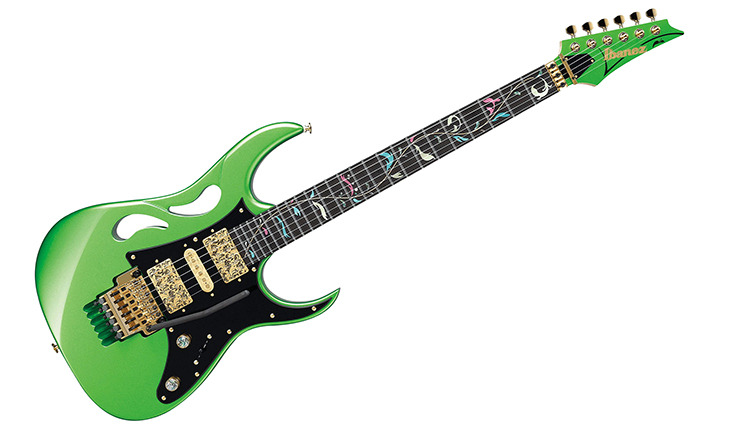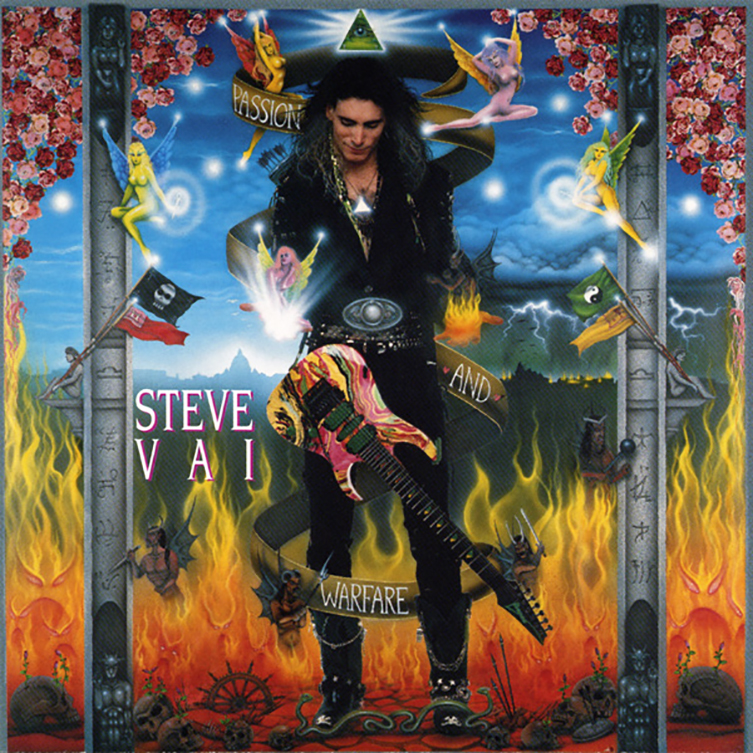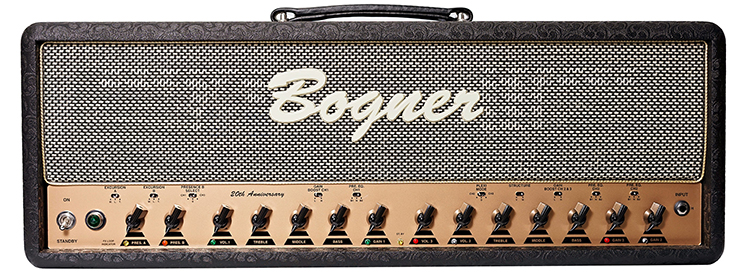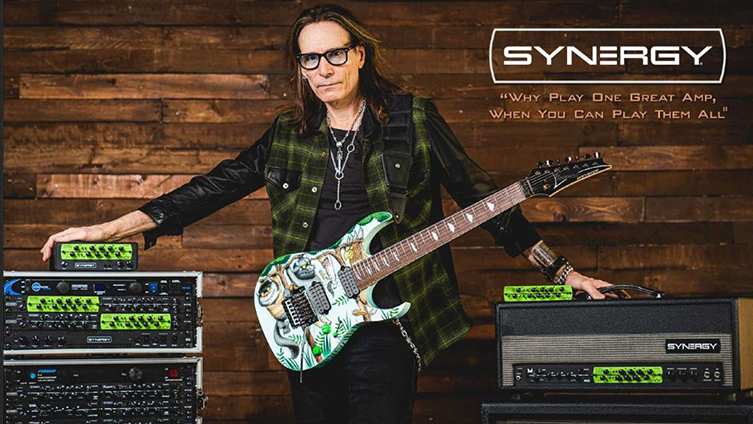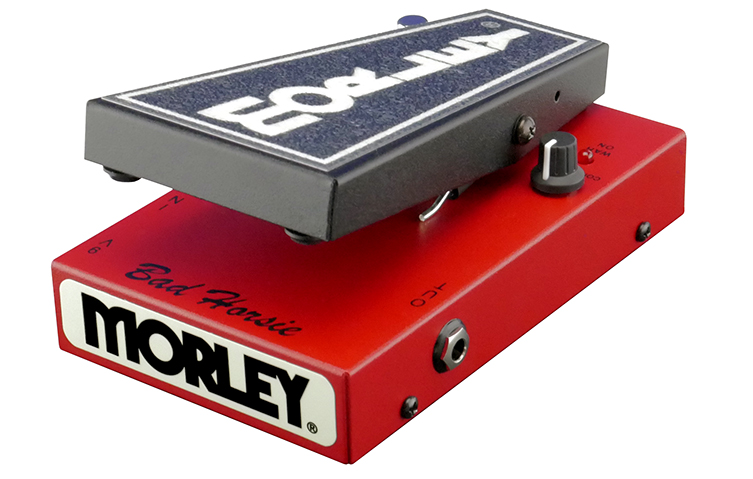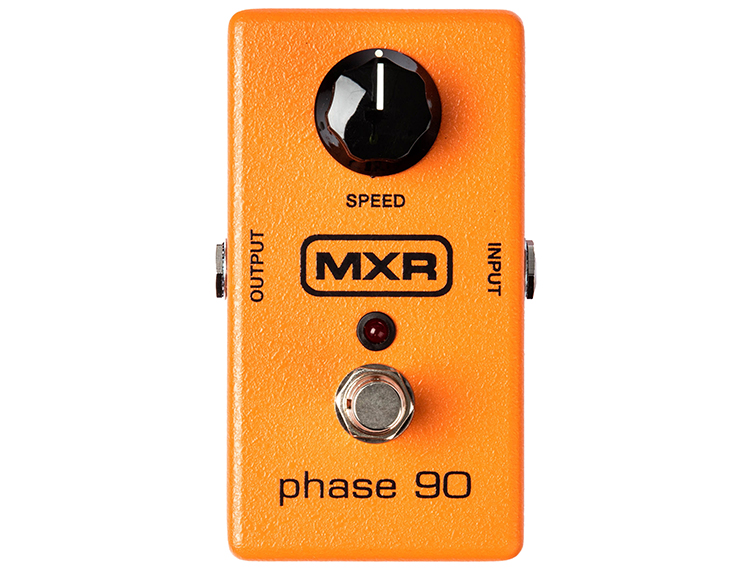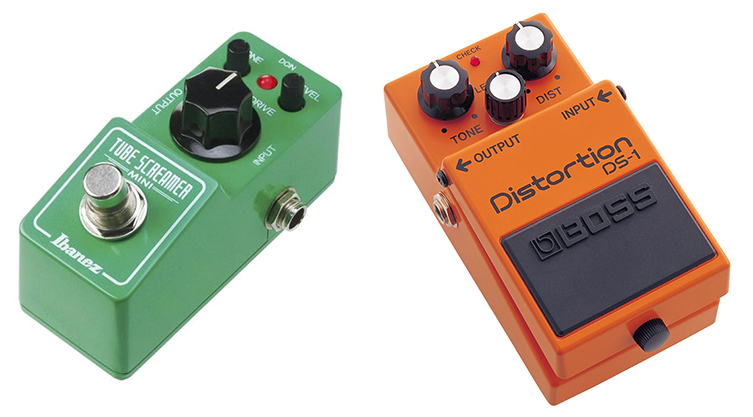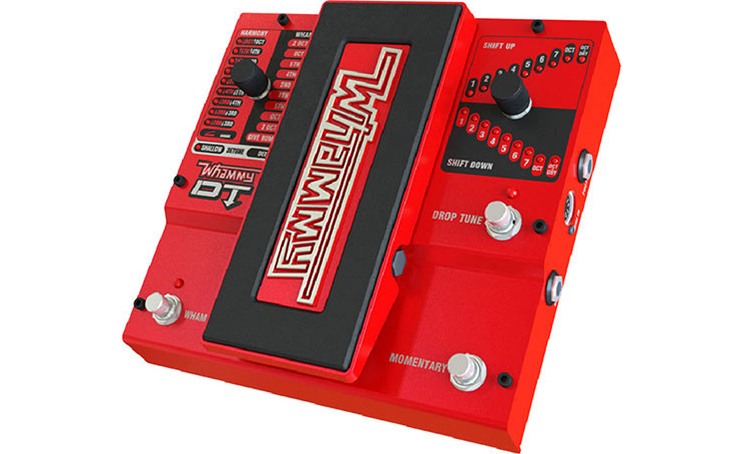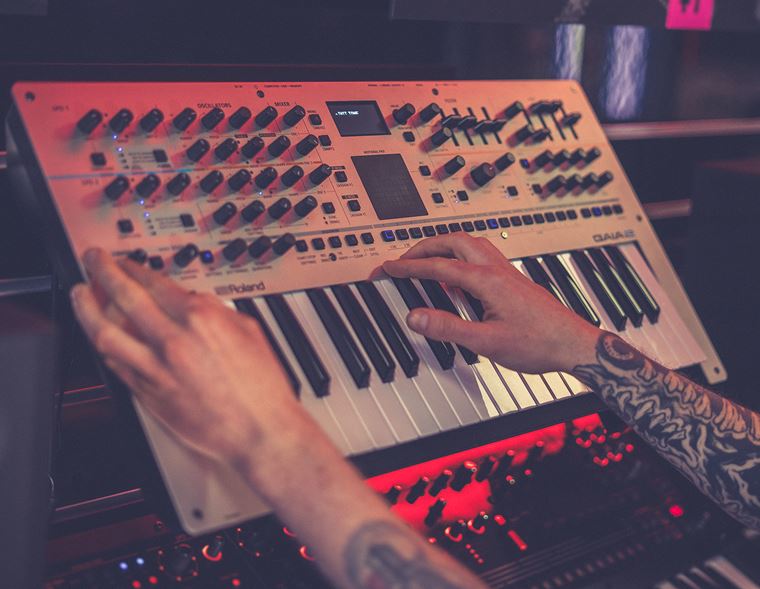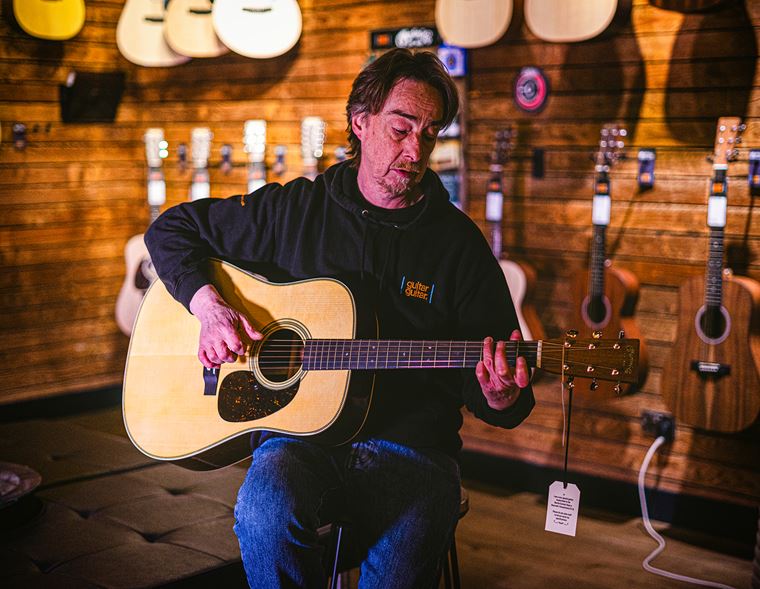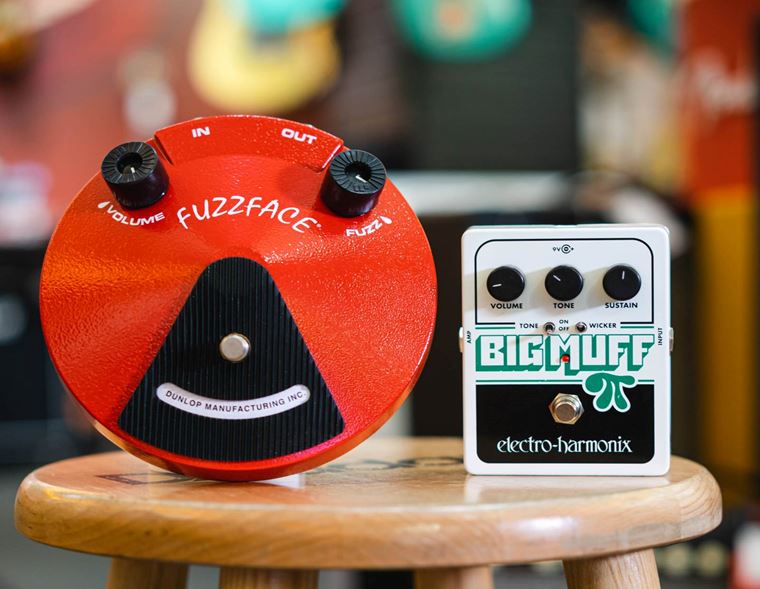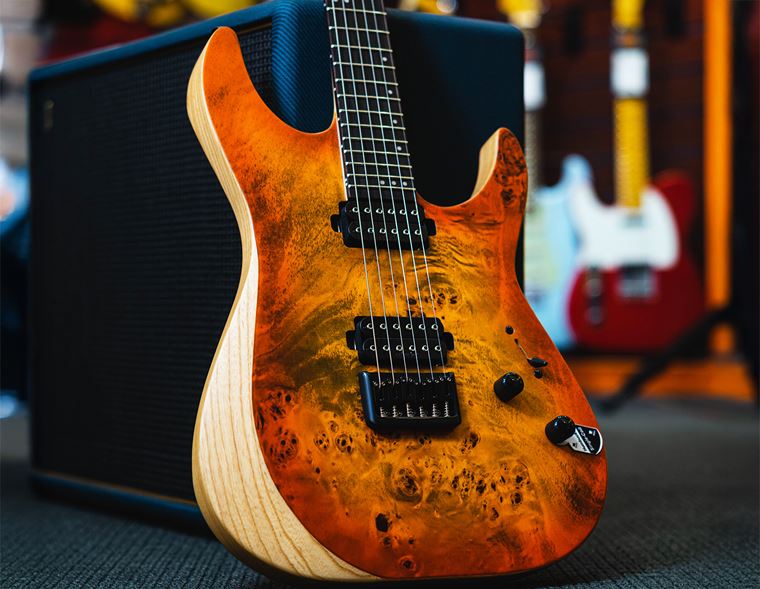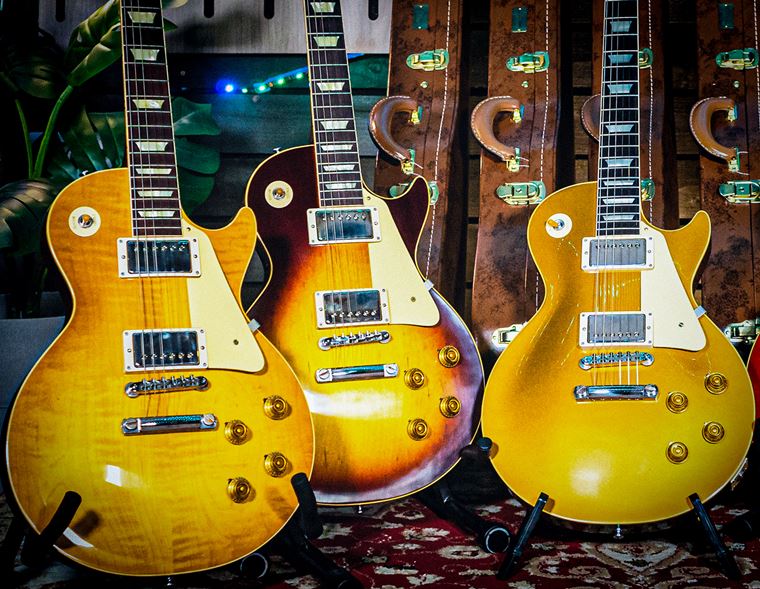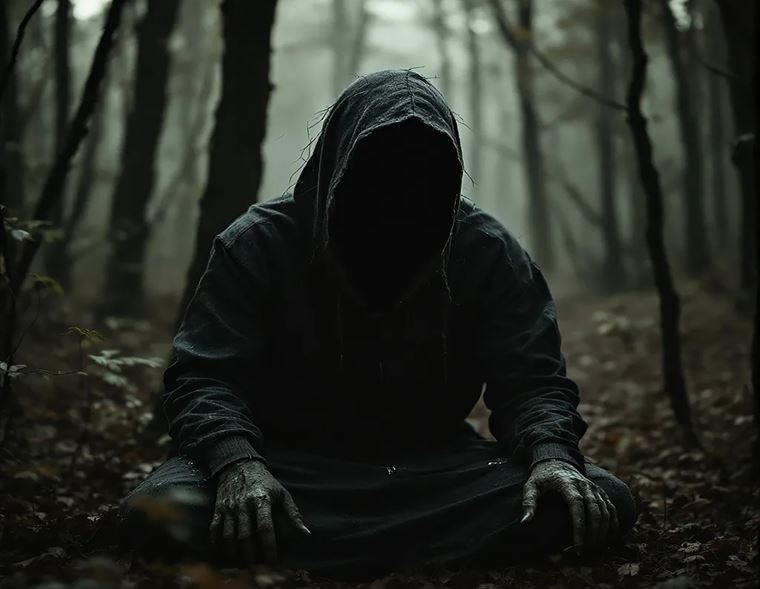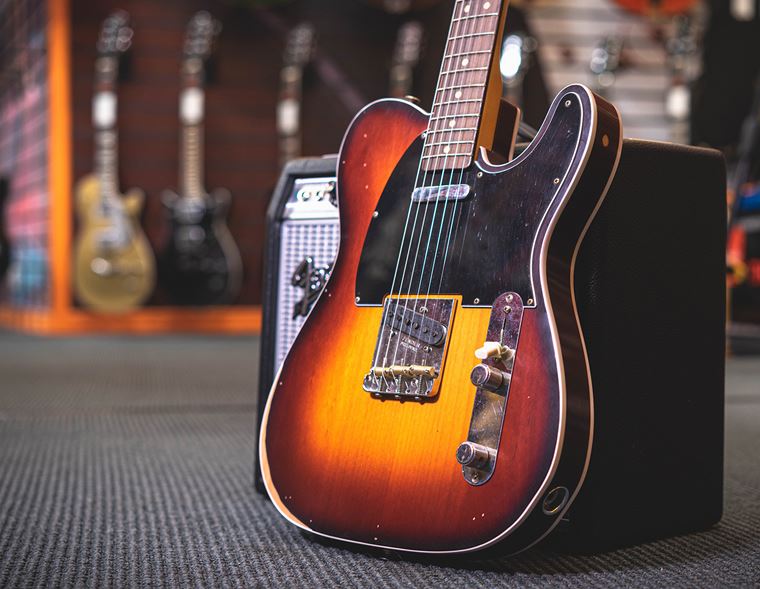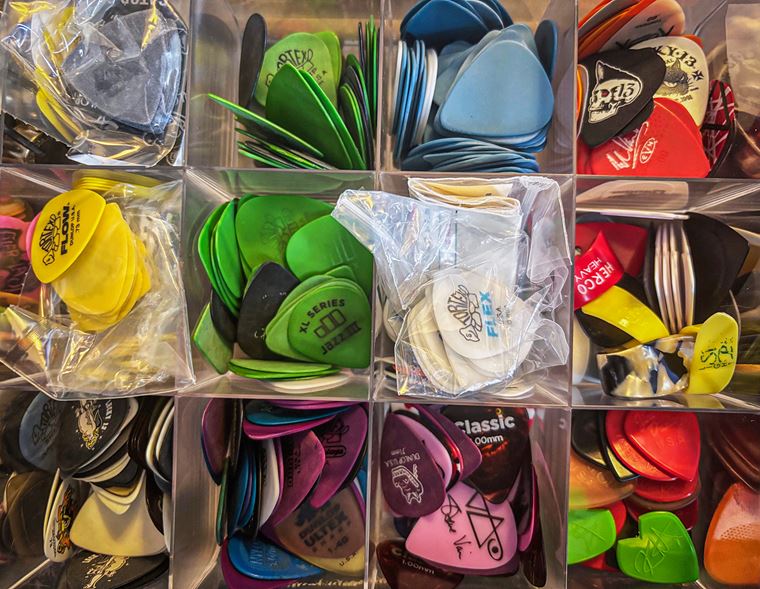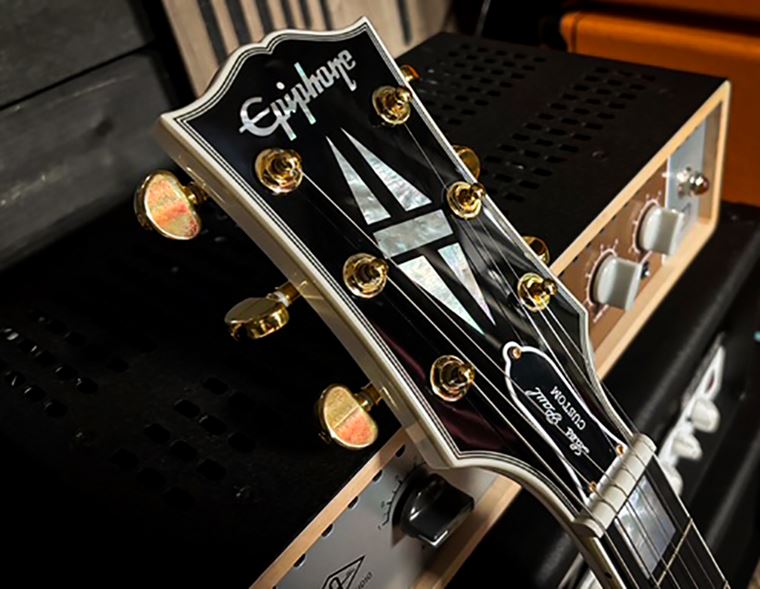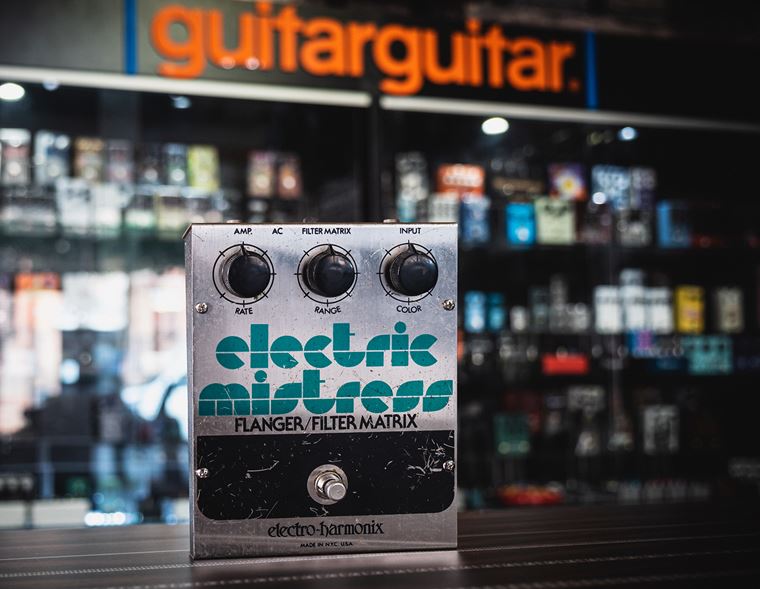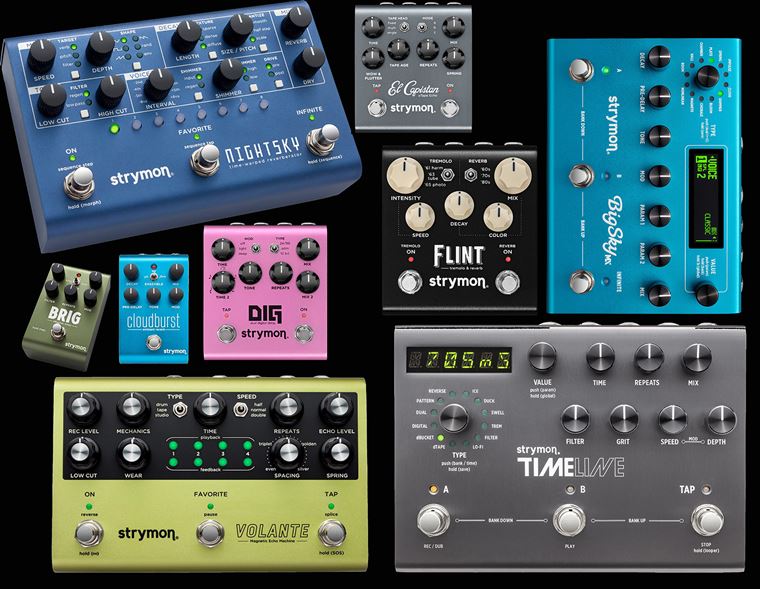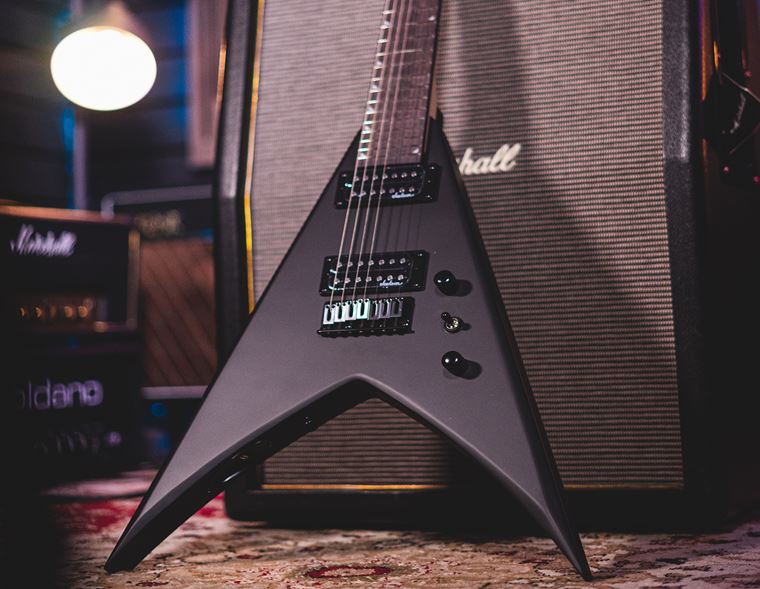On a guitar website there is hardly any need to introduce someone like Steve Vai. Whether you are a confirmed Vai acolyte, an casual admirer, or a fan from afar, it’s safe to say that you’ll agree with us when we say he’s a man of rare, unbelievable talent.
Indeed, in the pantheon of guitar legends, there are few as gifted or as individual as Vai. His career has been as colourful as his note choices, and guitar finishes! Since his days as a ‘secret weapon’ for Frank Zappa, through his years as stunt-sideman to David Lee Roth & Whitesnake, to playing the Devil’s guitarist in the movie Crossroads (those who’ve yet to experience Steve’s climactic showdown with Ralph ‘Karate Kid’ Macchio need to open a new tab and get YouTube on pronto) to his now 3-decades-plus career as a successful solo artist, Steve Vai has always brought a highly melodic and effervescent style to the instrument, not to mention acres and acres of untapped madness.

(Photo: Larry DiMarzio)
Guitar fans across the world routinely fill up entire online forums with discussion and speculation on just how Vai manages to achieve the frequently other-worldly sounds that jump from his fingers. Whole books are written about the man’s 12-hour practice regimes, whilst his own book on music theory, Vaideology, is a best-seller. He’s massively influential, highly creative and reliably left-of-centre.
Today, I want to look a little bit at Vai’s equipment setup. We’ll see his favourite guitars, his choice of pedals, picks and amps, and hopefully gain a little insight into the hows and whys of this near-mythical player. Much of Steve’s sonic trickery actually comes directly from his fingertips, which isn’t something I can sell you. I know, I know. Some of those alien sounds, however, are the results of FX manipulation, and for those, I can point you in the correct direction. This is what today's piece is about.
Over the last few years, I've been lucky enough to speak with Steve on a number of ocassions. We spoken in-depth about the development of both the JEM guitars and the PIA, as well as lots of other subjects. I'll link to these articles as we go along, (here's the first Steve Vai interview!) but it is worth remembering that much of my information on Steve's equipment has come directly from Steve. If that doesn't verify the info, I don't know anything that will!
Okay, Vai fans, let's do this!
Contents
The Ibanez JEM
Steve's iconic guitar is of course the Ibanez JEM. For a full and detailed account of the JEM's genesis and development, please click through to this exclusive blog - the Definitive Story of the Ibanez JEM - where I had the pleasure of speaking to Steve directly about it all.
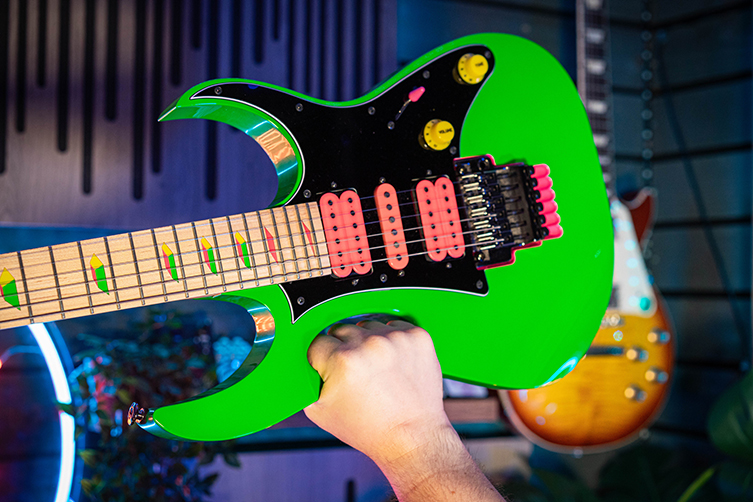
In short, though, the JEM gathered together lots of the things Steve wanted to see in a personal, custom guitar. The sharpened, sleeker shape, the monkey grip handle, the extensive routing behind the bridge to allow massive up-bend with the whammy bar, and other factors. Ibanez were the one company Steve spoke to who were able to completely nail the design, and he's been with them ever since. The JEM has been continuously in production since 1987, and has appeared in various guises and versions that are now collector's pieces. It's now a legit classic.
Ibanez JEM7VP
This is the iconic one, isn’t it? The one that we mostly think of when we talk about JEMs. The Ibanez JEM7VP is the production model JEM that most closely resembles Vai's own favourite guitar. Again, there is more detail in the dedicated JEM blog, but here's a summary of how the famous 'EVO' guitar came about...
Steve’s number one guitar over the years has been EVO, one of 4 original white JEM prototypes made for Steve by Ibanez. They were identical production line guitars, not custom shop models as some believe! The JEM had been around for 5 years at that point, in colours like Shocking Pink and Inverness Green. This new run was supposed to be somewhat more mainstream, without losing any of those signature eccentricities. Steve decided on White with Gold hardware and Ibanez produced four guitars for him. He played them all equally, but the story gets a little more interesting when we talk about the pickups...
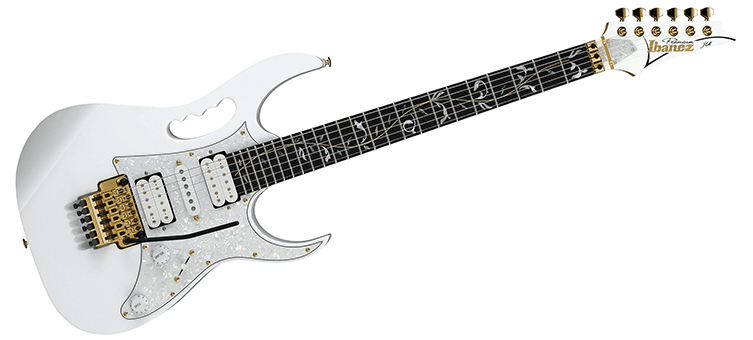
(Ibanez JEM 7VP, today's production model version of Steve's number one guitar, EVO)
Steve was also talking to DiMarzio about a signature pickup. In order to decide from his shortlist of possible pickup contenders, Vai had a different one installed in each of the four white JEMs. Since he was, at that time, moving through a fascination with Harley Davidson motorcycles, he opted to tell one guitar apart from the next by naming them after Harley engines and marking up the guitar accordingly with a Sharpie.
One of these engines was called Evolution, and that happened to be not only the pickup Steve preferred, but also the guitar. As Steve himself says:
“There was something about Evo that I responded to. Even though she was technically exactly like every other production model guitar, there was something about her touch and sound that moved me. To this day, whenever I see her, my heart goes pitter-patter. Regardless of what is going on in my life, highs or lows, Evo is always a tender sanctuary”.
So, what makes the JEM different from other guitars?
Well, plenty! Now, ostensibly, this is a superstrat with some eccentric additions, but let’s not be glib here: after all, the JEM has now been in constant production for nearly 4 decades, so there is obviously something special on offer. Bear in mind that Ibanez’s best-selling guitar style, the RG, is an offshoot of the JEM and not the other way around!
There are many JEM models out there, but most of them adhere to the main blueprint: a solid superstrat body with deep cutaways, a famed ‘Monkey Grip’ handle and a ‘Lion’s Claw’ feature routed into the wood behind the tremolo to facilitate wild up-bend. The neck is super skinny, with 24 frets (the last four often being scalloped to make fretting those top tones super easy) and a ‘Tree of Life’ inlay decorating the entire fingerboard.
(The JEM Jr is very affordable but no less wild than the others!)
The JEM is nearly always available with an H-S-H pickup configuration and a locking whammy bar. Cheaper models have stock pickups and hardware (remember, JEMs are available at most price points), but the one closest to Steve’s own favourites - like the JEM7VP - have signature DiMarzio pickups and an Edge Pro tremolo, which is a licensed design from Floyd Rose. Steve’s first pickups, which are still best-sellers, are the Evolutions. Since then, DiMarzio have made Blaze, Breed, Gravity Storm and other models, all to cater to Steve’s changing needs.
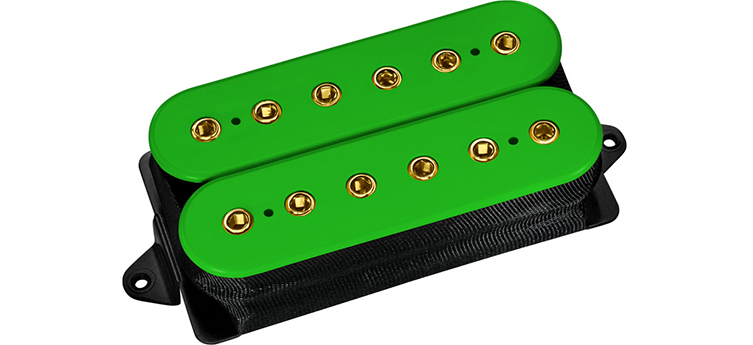
(Ibanez Evolution pickup. In bright green, naturally)
JEM fans and collectors will all have their favourite models, since there have been loads of limited-edition JEMs over the years. Swirl finishes, Floral finishes (using real curtain fabric!) and stained, blowtorched finishes abound. So it has been since ’87...until the release of the PIA!
The Ibanez PIA is a recent re-drawing of the JEM magic, not replacing but sitting alongside its sister model in the Ibanez catalogue. For more details, have a look at our dedicated Ibanez PIA blog, but to sum things up, the spec is largely similar to the JEM, but with new DiMarzio UtoPIA pickups and some subtle reshaping of the body contours. It’s still an H-S-H configured Superstrat with a cut out in the body and a locking tremolo. This is clearly the blueprint that suits Steve the best.
The take-away from all of this is the following: Steve needs a high-performance guitar with powerful, harmonically rich pickups, a locking tremolo that gives a large amount of up-swing, and easy access to all 24 frets. The Monkey Grip is fun but hardly essential to the tone of the guitar! Keep these points in mind if you’re choosing a new shred axe and want to follow Vai’s footsteps: Ibanez’s huge range of RG models will surely inspire. Or just buy a JEM, of course!
(The JEM's influence is clear in this Prestige Ibanez RG model)
Ibanez Universe
It’s also a relatively-well-known fact that Steve co-invented the world’s first mass-production 7 string guitar! Yes, the Ibanez Universe, released in 1990, swapped out the Monkey Grip for an extra string and made history. 7 string guitars are ubiquitous within certain circles these days, but they were a brave step into the abyss thirty five years ago! Bands like Korn took the precarious popularity of early Universe guitars and sat them squarely on the Rock and Metal map for good.
Steve’s Universes have also enjoyed many unorthodox finishes over the years, and the current Ibanez UV70P from Ibanez’s Premium line is a favourite: it' a reissue of one of the original black and lime green models. For Vai aficionados, the other original Universe finishes were White with ‘disappearing pyramid’ inlays (these had already appeared on the JEMs) and the famous multicolour swirl with pyramids that you’ll see on the Passion and Warfare cover.
Strings
Steve pretty much always uses Ernie Ball 9-42 gauge strings. There are some forum posts out there about him beginning tours with 7-gauge strings and working up to 9s, but I'm taking that with a pinch of salt. 9s are the standard for many technical players, and for those who use locking whammy bars a lot. I recommend sticking with this gauge and just keeping an eye on your left-hand pressure to make sure your notes and not over-intonated from a heavy hand. Perhaps try Paradigm 9-gauge, if you want to follow Steve with the Ernie Ball brand and are looking to get longevity out of your string purchase.
Plectrums
Steve likes a 1mm plectrum, in the normal shape, and made out of Delrin. Steve’s picks are made by Ibanez, but I'm going to go out on a limb here and suggest that the shape, thickness and material of the pick is more important than the brand, right? 1mm Delrin picks are some of the most available plectrums around, so it will not be difficult to source some! Plectrums do influence your playing, so why not experiment by choosing a few different types of 1mm pick and seeing what works for you? This is the cheapest way to dramatically alter and influence your technique!
Amps
So, Steve has used quite a few different amps over the years. Mostly, they have been modified tube heads with a fair amount of gain available, which is then helped along by pedals to get his final tone. Let's talk about the amps first.
In the 80s, Steve opted for Marshall plexi heads, which he used for their preamp section only. These were fed onto Mesa Boogie and Yamaha power amps. Two pink Soldano heads made it into Steve’s Whitesnake rig, as did a Bogner Ecstasy by the time his Sex & Religion world tour came around. These are all examples of boutique-level tube amps with cascading gain stages that provide huge leves of expressive distortion.
Carvin built him a signature amp, the Legacy, which eventually morphed into three variations and lasted for around twenty years in his live rig. These amps were designed, toured, tested and tweaked to Vai’s precise specification. They’ve now been discontinued, but Steve has found new love in Synergy Amps!
Synergy make amp modules, which slide into place in their heads and combos and are made with some of the world’s leading amp makers. For example, inside their SYN-2 preamp, there’s space for two different modules. You can have proper, licenced modules from, say, Friedman and Diezel in there, or Bogner and Soldano, with each module sounding and behaving exactly like the amp they’re based on! Be be clear, this is NOT modelling: this is the real deal, created by those amp makers for Synergy, so you are getting truly authentic, valve preamps here!
If you are Steve Vai, however, you get your own! The Synergy Steve Vai module, available in the same Lime Green ‘n’ Black combo we loved on the Universe, is a two channel, all-tube module. The Blue channel gives you clean tones with toggles for Fat and Bright features. The Red channel is where the gain really lives, and has Boost and Bright toggles. The channels have their own EQ and are footswitchable. This is all in one module, folks! If you have a two (or three!) channel synergy head, combo or rack, this takes up just one space! The possibilities are dizzying.
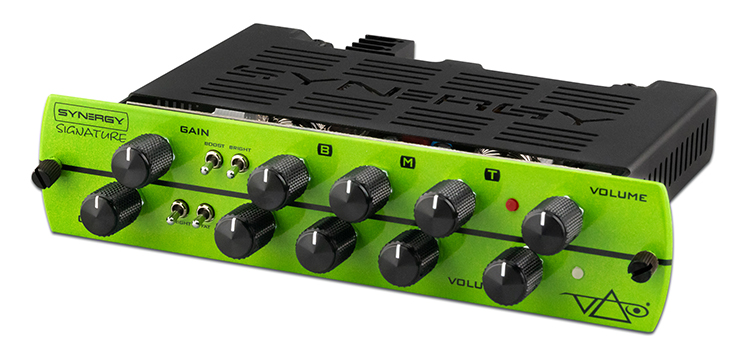
Wah Pedal
Listen to almost any Steve Vai song and the odds are good that you’ll come across some wah pedal sections at some point. Wah plays a large part in defining Steve’s primary ‘voice’ on the guitar, so you can bet he’s specific about the one he uses!
Steve uses a Morley Bad Horsie wah. Named after his Alien Love Secrets song of the same name, the Bad Horsie is his own signature switchless wah pedal. It’s fair to say that you could use any wah to get reasonably close to Steve’s overall wah vibe, but if you either want full authenticity, or in fact do not have a wah at all and need to buy one, we recommend giving the newest Morley 20/20 Bad Horsie wah pedal a try. It has a large sonic sweep, allowing for lots of nuance to come through, as well as a wealth of untapped bark and roar!
The 20/20 Bad Horsie is a part of Morley’s new revamp of their entire line. It’s smaller than previous versions, so it’ll fit on your board more easily, plus it’s still made in the USA from extremely tough components. The switchless design means it turns instantly on when your foot lands on it, and turns instantly back off once you remove your foot. Nice!
Steve has used the Bad Horsie, in it's various permutations, for over 20 years now. Considering how discerning he is about his tone, this speaks volumes about Morley's quality and integrity as a brand.
MXR Phase 90
Like David Gilmour before him, Vai understands that the no other pedal is as capable of ethereal mood and atmosphere like an MXR Phase 90. Take a listen to The Black Forest from Alive in an Ultra World, and there’s Phase 90 all over the place! Steve often employs the effect during solos to add colour and movement to a piece, much as he does with his Wah.
Distortion Pedals
Ibanez used to make the swirl-finished Jemini pedal, which was an overdrive and a distortion incorporated in the same housing. It was never much of a secret that these effects were modelled closely on the Ibanez TS-9 Tubescreamer and the BOSS DS-1 Distortion. Yep, nothing massively arcane or exclusive here: these are potentially two of the most common stomp boxes out there! It just goes to show you that it’s not so much what you have, it’s what you do with it that gets results! It also shows that you don’t need exceptionally expensive gear to sound like a guitar god!
If you haven’t made yourself acquainted with either of these pedals, it’s high time you did so! Remember, buying a DS-1 will not make Steve Vai’s playing come out your amp any more than a Strat turns you into Hendrix. The DS-1 is simply a way for Steve to add more dirt to his signal. His world-beating guitar playing does the rest!
Ambient Effects
In the past, Vai used TC Electronic G-Force rack units for his delays and reverbs, along with the occasional twiddle with a pair of humble BOSS DD-6 stomp boxes! Nowadays, however, Steve is a convert to the ways of the Fractal Axe FX-II. This is for his FX only: he doesn’t seem to be too bothered about their amp modelling. One thing we’d perhaps share when thinking about Steve’s use of FX is the fact that his rig is stereo. It makes a big difference to a great many things, having two physical objects firing out sound into a room. For one thing, deft use of a stereo delay will give his sound some subtle movement without going as far as adding a Chorus effect. Needless to say, a player using a stereo setup can take advantage of multiple amp setups, as Steve has done over the years, in order to dial in just the right combination of tonal elements from multiple sources.
Some special effects can be created with (very) long stereo delay effects: witness the notoriously difficult ‘squeal’ section just before the solo to Bad Horsie. Then check out the self-harmonising solo from The Boy From Seattle (both songs from Alien Love Secrets) to hear just what can be done with delay, imagination and skill!
(Click forward to around 3m 20 to hear Steve's Brian May-esque use of delay!)
Pitch effects
Steve’s a famous Whammy pedal user. His technique goes from the sublime (if you can play the harmonised Whammy parts on Touching Tongues, I want to hear it) to the insane (all of The Mysterious Murder of Christian Tiera’s Murder), and it is a permanent fixture on his pedalboard.
Back in the 90s, when this pedal first gained prominence, it was really only Digitech who made such an effect. Nowadays, most manufacturers provide real-time pitch shifting in their multi-FX units, but there is something about the Digitech Whammy itself that just keeps charming players. Steve seems to be using the DT version these days, which includes more modes and sonic options.
Other pitch creations come directly from that most mysterious of high-end effects, the Eventide Harmonizer. It’s only in the last few years that Eventide have put out pedals such as the Pitch Factor, which incorporates many of the Harmonizer’s arcane patches in its circuitry. The H9 is a great shout for the adventurous player in today’s climate, but for vintage authenticity, scour the internet for an H400 Harmonizer: that’s what Steve had in his ‘Mothership’ studio!
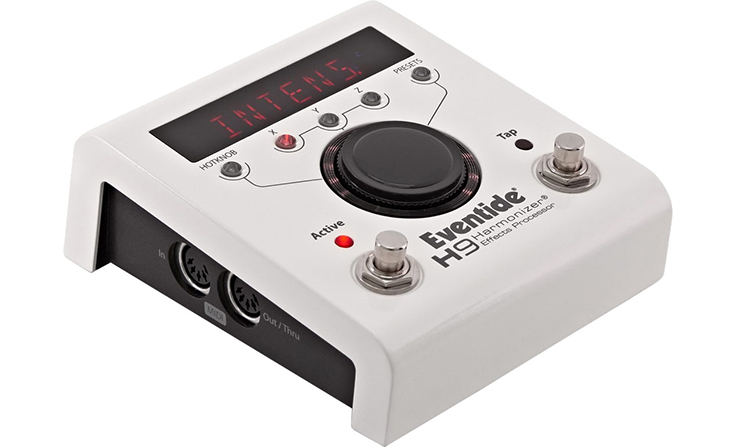
(Eventide's H9 pedal allows you to pick and choose from thousands of incredible presets and algorithms, including many from their celebrated Harmonizer units)
At its heart, the Eventide Harmonizer is a massively powerful (certainly for the time and even so today) pitch, reverb and delay effects processor. Doubling, panning, widening, fractalizing, shimmering, wooshing...these units come with a large number of vague descriptive terms and literally hundreds of presets to use. Lots of players like to use it in subtle ways, whereas others create pieces like Ballerina 12/24, which was played entirely through an Eventide Harmonizer, with pitch shifting applied to not only the original signal, but also successively to each stereo delay repeat, making three guitar parts come out of a single note!
Inspiration
Apart from those things, practice, dedication and endless invention are all that is required to match Vai’s achievements on the guitar. On a more serious note, we’d share that it may be more constructive to take from Vai’s attitude of following his own unique path and finding a musical voice that no one else has, rather than trying too hard to copy what he actually does. Having said that, it’s worth paying attention to the equipment choices of any master guitarist who has gone through decades of experimenting and testing out gear: Vai can play anything he wants, so the stuff he chooses to use must all be pulling their weight one way or another!
We invite you to let a little Vai into your life as you walk your musical path. Whether it’s in his dedication to a practice regime, his ear for an exotic melody, his sense of drama or his outlandish taste, there are plenty of elements you can incorporate into your own practise to expand your creative horizons.
Thanks for reading, and good luck with your playing. Before you go, here's a conversation with the man himself, from earlier this year. There's wisdom and encouragement in here for you!




